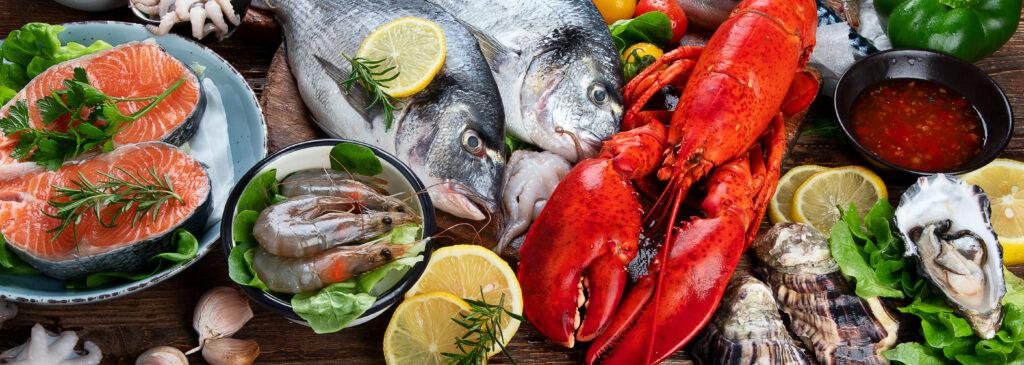Seafood, including fish, shrimps, prawns, crabs, squid, algae, mussels and others, are popular for their palatability and high nutritional value (e.g. protein, vitamins, calcium, iron). They can also have a number of positive health effects, such as antioxidant, anti-cancer, blood sugar control, etc. However, most seafoods are known to be highly allergenic and can cause allergic symptoms (including asthma, rhinitis, abdominal cramps, vomiting, skin itching, and in severe cases even anaphylactic shock) in sensitive individuals. Recently, the number of food allergy cases has been steadily increasing, which problem should be addressed by the industry.
The vast majority of seafood allergens are proteins, such as tropomyosin (e.g. shrimp, squid, crab, fish), parvalbumin (e.g. fish), arginine kinase (e.g. crabs and lobster) and haemocyanin (e.g. octopus and scallops). Because of the thermal stability of some marine allergens (e.g. tropomyosin and parvalbumin), heat treatment cannot alter their allergenicity to any great extent, and sometimes heat treatment even causes an increase in allergenicity.
Non-thermal processing technologies, such as high pressure processing (HPP), cold plasma (CP), ultrasound, pulsed electric field (PEF) and ultraviolet (UV), can offer solutions to reduce the allergenicity of seafood. In an article published in 2022, the authors summarised the structural and antigenic properties of non-thermally treated seafood allergenic proteins. Non-thermal processing usually results in structural changes of the allergen, leading to the masking, exposure or destruction of epitopes (an epitope is the part of the antigen that is recognised by the cells of the immune system and to which the antibody produced against it binds in order to destroy it).
Seafood allergy is a type I allergic reaction mediated by IgE. The ability to combine seafood allergens with human serum is the most direct indicator of the immune response, namely the IgE-binding capacity (antigenic integrity). When animal antibodies are applied to conduct, it is called immunoreactivity. They are the ability of IgE/IgG to bind to epitopes. In vitro immunoassays, specific IgE in the serum of allergic patients is used to react with the allergens, following characterization of its IgE-binding capacities through enzyme reactions. Enzyme-linked immunosorbent assay (ELISA), western blotting, and dot blotting are the three most common methods for IgE-binding capacities/immunoreactivity analysis.
Several studies have confirmed that non-thermal processing techniques can reduce the IgE-binding capacity of seafood allergens. However, due to the unclear processing mechanism, further, more thorough and valid evaluations are needed to confirm such a conclusion. Functional studies, in vivo studies or animal studies should be performed to evaluate the allergenic effect of treated seafood allergens. Only then would it be possible to reveal the actual reduction in allergenicity induced by non-thermal processing. In addition, other possible effects, the efficacy, reliability and safety of the procedures should be studied, which may require the development of new methods. Only a comprehensive analysis of the impact of non-thermal processing technologies can provide practical support to the food industry in the future.

Seafood also poses microbiological risks, which can also be addressed by various non-thermal methods such as electron beam irradiation (EBI).
According to a recently published research, the process could improve the safety of seafood by inactivating pathogens in food without significantly affecting the nutritional and organoleptic properties of seafood. Compared with other non-thermal techniques, EBI has several advantages, such as being inexpensive, non-polluting and having good antibacterial properties. However, when EBI is used, the irradiating electrons can react chemically with the genetic material of seafood. However, effects such as lipid oxidation (LPOD), protein oxidation (PNOD), physicochemical changes and sensory changes limit the application of the technology in seafood.
However, the authors suggest that EBI in combination with antioxidants can effectively overcome the limitations of its use in seafood preservation and extend the shelf life of seafood. Before the technology can be applied in practice, further studies are needed, for example to standardise the appropriate dosage of EBI, to clarify the mechanisms of action of EBI-induced changes (lipid and protein oxidation, physico-chemical changes) and its effects on the organoleptic characteristics of the products.

